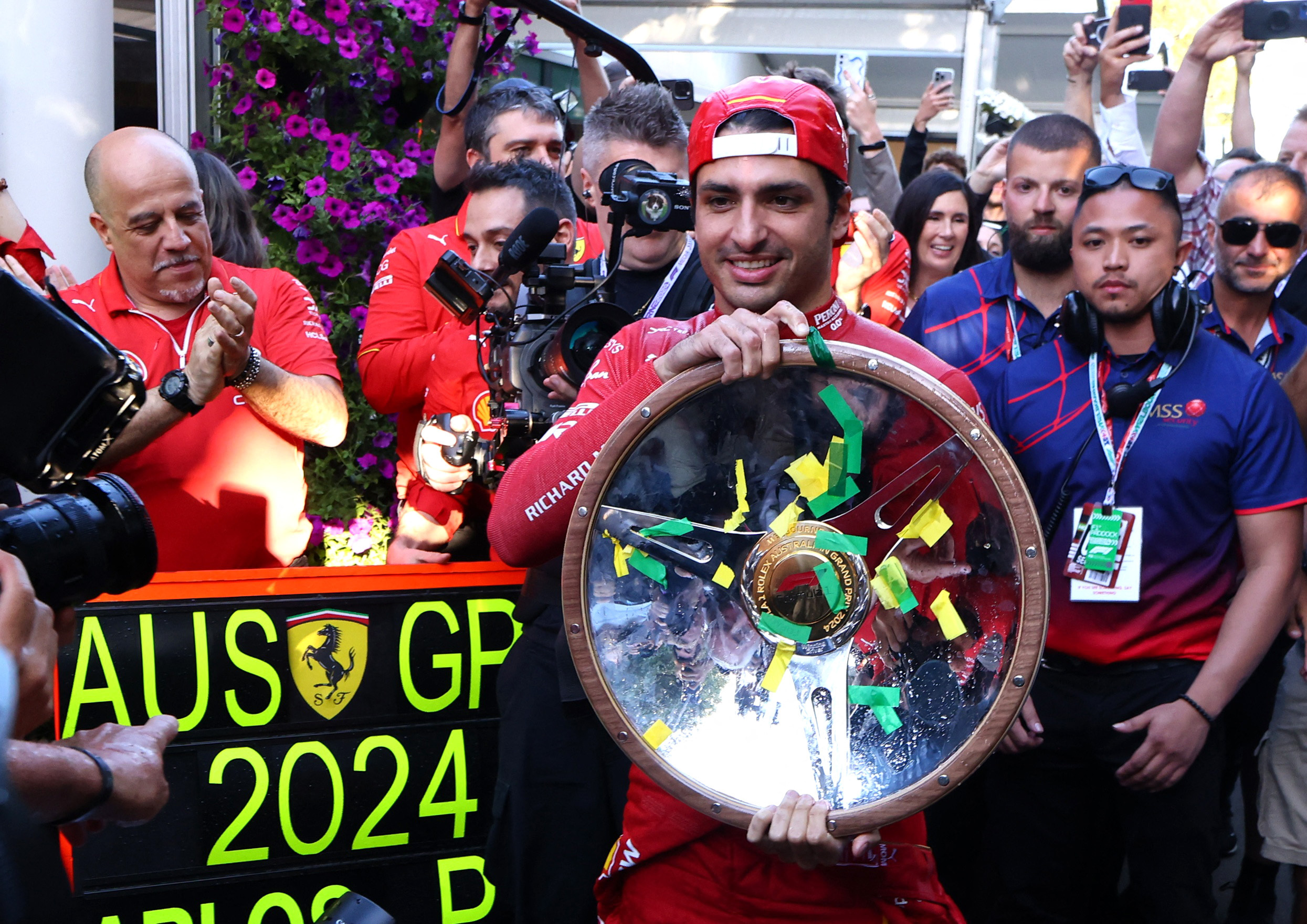[ad_1]

F1 – Australian Grand Prix – Melbourne Grand Prix Circuit, Melbourne, Australia – March 24, 2024 Ferrari’s Carlos Sainz Jr. celebrates with the trophy after successful the Australian Grand Prix REUTERS/Mark Peterson/File Photograph
Spaniard Carlos Sainz has make clear how he went from hospital to hero, successful an Australian Grand Prix the Ferrari driver had feared he may miss after emergency appendix surgical procedure two weeks earlier.
The 29-year-old gained in Melbourne on Sunday after Purple Bull’s triple world champion Max Verstappen suffered a primary mechanical retirement in two years.
The victory meant Sainz, additionally a winner in Singapore final September, stays the one driver exterior Purple Bull to triumph since 2022 — some feat for a person nonetheless with no seat for 2025.
READ: F1: Carlos Sainz wins Australian Grand Prix in Ferrari 1-2
The Spaniard, who palms over to seven-time world champion Lewis Hamilton on the finish of the 12 months, missed the Saudi Grand Prix in Jeddah on March 9 after surgical procedure a day earlier.
“As quickly as I received my appendix eliminated, I went on the web and began speaking with professionals and mentioned, ‘OK, what helps to hurry up restoration?’,” he informed reporters.
A race he’ll always remember 🤩
Carlos Sainz appears to be like again on his outstanding win which got here simply two weeks after present process surgical procedure #F1 #AusGP pic.twitter.com/ye8xpi2ZNE
— Formulation 1 (@F1) March 24, 2024
“I began doing all of the type of issues that you are able to do to hurry up restoration, the injuries, the scar tissue, what you may assist to be sooner on that, speaking to different athletes, speaking to different medical doctors in Spain, internationally.
“After which I put collectively a plan with my group. The rationale why athletes get better sooner is as a result of you may dedicate 24 hours per day for seven days to restoration. And that’s precisely what I did.”
Sainz watched British teenager Oliver Bearman step into his automotive in Jeddah and drive it to seventh place on a unprecedented F1 debut, after which he started working.
READ: F1: Carlos Sainz nonetheless hopes to struggle for a title with Ferrari
He had twice each day hour-long periods within the hyperbaric chamber, respiratory pure oxygen at larger strain, and used an electromagnetic INDIBA machine for tissue restore.
Sainz programmed his time spent in mattress, strolling and consuming “the sort of meals that you must get better.”
If he felt stiff and drained by the tip of the race at Albert Park, the consequence exceeded all expectations.
“9 days in the past, after I was about to catch the flight to return to Australia, I used to be nonetheless in mattress. I may barely use my stomach (muscle tissue) to maneuver. And I used to be like, this isn’t going to occur,” he mentioned.
“However I took the flight, and abruptly after I landed in Australia, the sensation was quite a bit higher.
“And each 24 hours, I used to be making much more progress than the primary seven days, which is definitely what all of the medical doctors {and professional} folks informed me. Don’t fear, as a result of the second week, on daily basis goes to enhance much more than the primary week.”
The Spaniard was the primary driver since Austrian Gerhard Berger in 1997 to win his first race again from a medical absence.
McLaren’s Lando Norris, third on Sunday and Sainz’s former teammate, mentioned it was typical of the person.
“I’m positive you’ve got loads of drivers who in all probability wouldn’t have tried as laborious and devoted a lot of their effort and time to making an attempt to get better and get again within the race automotive,” he added.
[ad_2]




